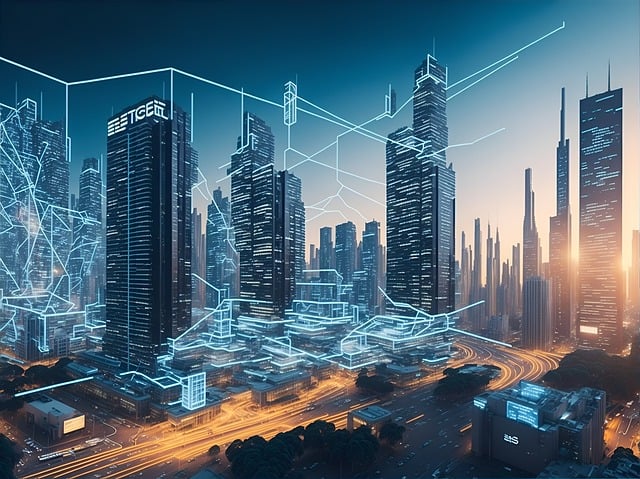AI grading and excavation scope predictors are revolutionizing landscape shaping by offering unprecedented precision and efficiency in terrain manipulation, leveraging machine learning algorithms to analyze satellite imagery, topographical maps, and historical records. These tools automate initial stages of construction planning, generating detailed 3D maps for targeted excavation, filling, or terracing. They enhance decision-making, reduce manual effort, minimize errors, facilitate cost-effective material budgeting, and mitigate risks by identifying structural remains and buried utilities. Despite challenges like data quality, accessibility, and system compatibility, integrating AI into landscaping promises to transform the construction industry through evolving capabilities.
“The fusion of Artificial Intelligence (AI) and construction landscaping is reshaping the industry. With advanced terrain mapping technology, AI hardscaping tools are revolutionizing the way we approach outdoor space design and development. This article delves into the transformative power of AI grading and excavation technology, exploring its role in predicting construction scope with unprecedented precision. We’ll examine the benefits it brings to projects, while also tackling challenges and highlighting how these innovations are set to redefine landscaping.”
- Understanding AI Grading and Excavation Technology
- How AI Hardscaping Tools Predict Construction Scope
- Benefits and Challenges of Integrating AI in Landscaping Projects
Understanding AI Grading and Excavation Technology

AI grading and excavation technology has revolutionized the way landscapes are shaped, offering unprecedented precision and efficiency in terrain manipulation. These advanced systems leverage artificial intelligence (AI) algorithms to analyze and interpret complex geographic data, enabling accurate prediction of grading and excavation scope. By integrating various data sources such as satellite imagery, LiDAR scans, and digital elevation models, AI algorithms can identify landforms, detect irregularities, and anticipate soil types with remarkable accuracy.
This technology goes beyond traditional methods by automating the initial stages of construction planning. AI grading and excavation scope predictors can generate detailed 3D maps, pinpointing areas requiring excavation, filling, or terracing. This not only reduces manual effort but also minimizes errors, ensuring projects adhere to precise specifications. Moreover, it allows for cost-effective material budgeting and informed decision-making throughout the construction process.
How AI Hardscaping Tools Predict Construction Scope

AI hardscaping tools are transforming the way construction projects are scoped and managed, particularly in terms of grading and excavation. By leveraging machine learning algorithms, these tools can analyze vast datasets from satellite imagery, topographical maps, and even historical construction records to predict with impressive accuracy the scope of grading and excavation required for a given site.
This predictive capability is driven by AI’s ability to identify patterns and relationships within data. For instance, an AI grading predictor can assess terrain roughness, slope steepness, and rock or debris distribution to estimate the amount of earthmoving needed. Similarly, AI excavation scope predictors consider factors like structural remains, buried utilities, and environmental constraints to anticipate challenges and resource requirements. This predictive power not only streamlines project planning but also enhances safety by enabling contractors to anticipate and mitigate potential risks early on.
Benefits and Challenges of Integrating AI in Landscaping Projects

Integrating Artificial Intelligence (AI) into landscaping projects offers a myriad of benefits, revolutionizing how we approach terrain mapping and construction. AI grading and excavation scope predictors can analyze vast datasets, including geographic information systems (GIS) data and satellite imagery, to create precise digital representations of landscapes. This technology facilitates informed decision-making by providing detailed insights into slope angles, soil types, and potential obstacles, thereby enhancing efficiency and accuracy in site preparation.
Despite its advantages, implementing AI in landscaping presents challenges. Data quality and accessibility are initial hurdles; obtaining comprehensive and up-to-date spatial data can be difficult and costly. Additionally, ensuring the compatibility of existing systems with AI tools requires significant investment in technology infrastructure and employee training. Nevertheless, as AI continues to evolve, addressing these challenges will pave the way for more sophisticated and automated landscaping practices, ultimately transforming the construction landscape.
AI technology is transforming the landscape industry by offering precise tools for grading, excavation, and terrain mapping. By leveraging these innovative capabilities, AI hardscaping construction technologies can significantly enhance efficiency and accuracy in project planning and execution. Integrating AI into landscaping projects provides numerous benefits, including reduced costs, faster timelines, and improved site safety. However, challenges such as initial implementation costs and data privacy concerns must be addressed to fully unlock the potential of this game-changing technology, making it an exciting area to monitor in the evolving world of construction.
